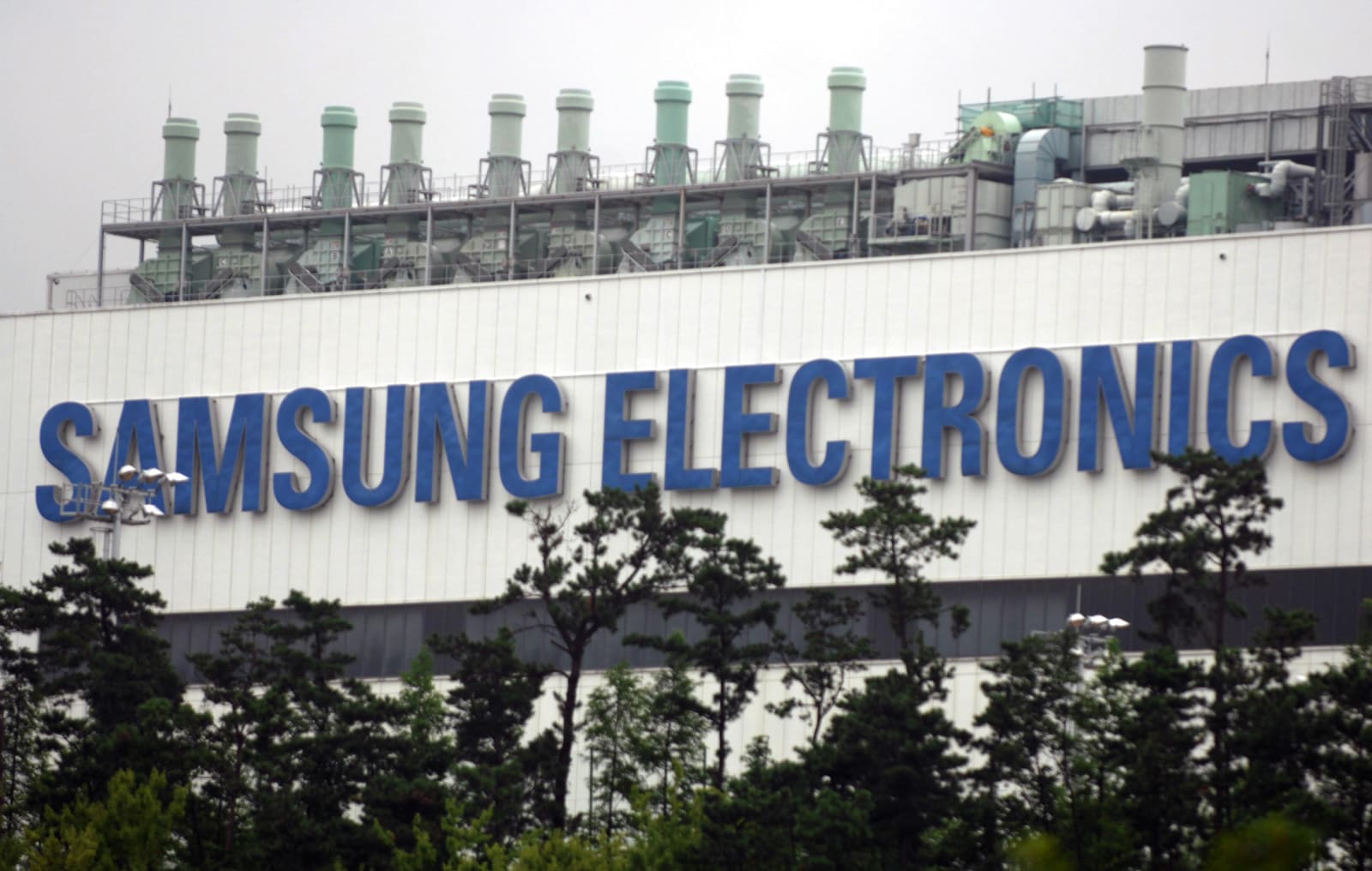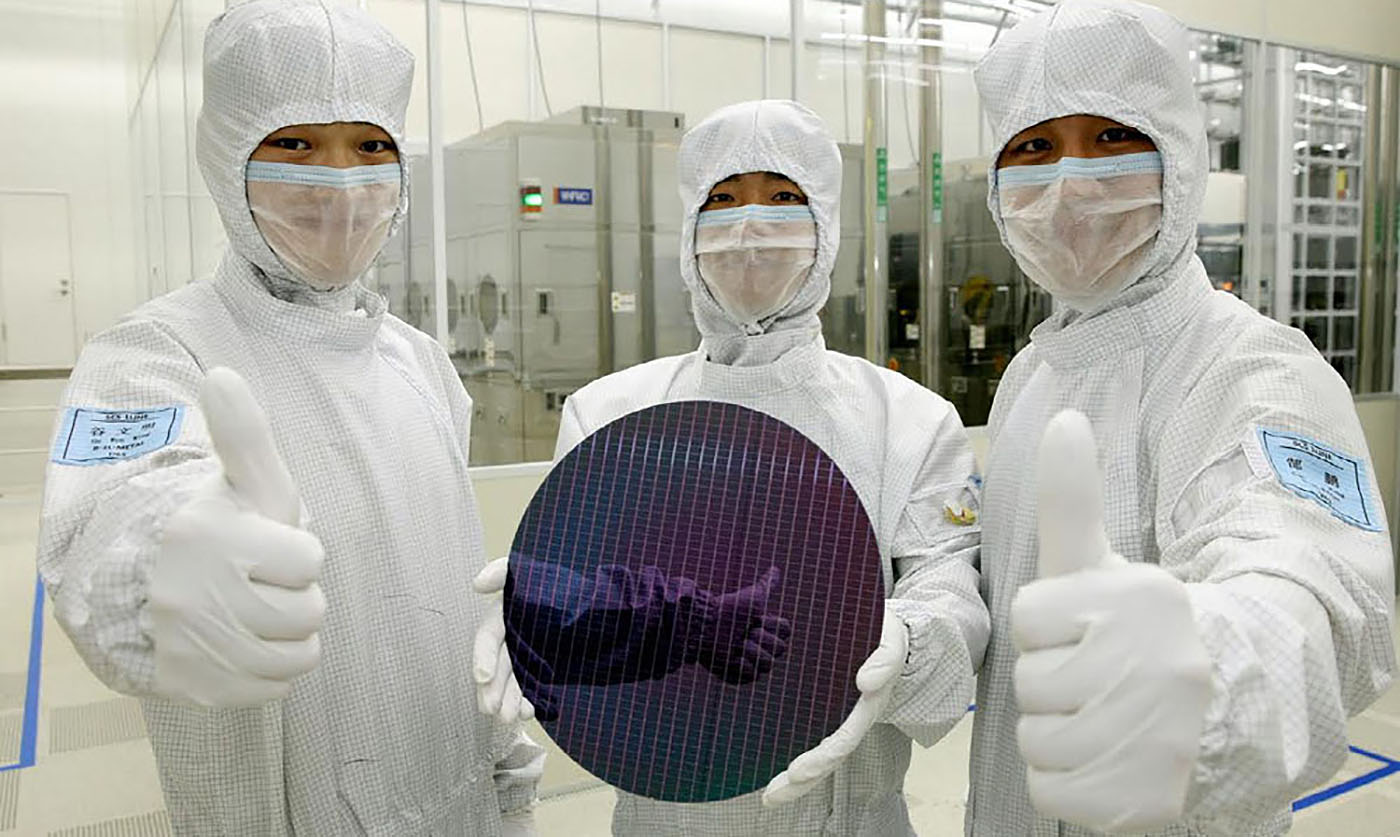Tag Archives: foundry
Samsung starts building 10-nanometer processors
 Chip companies are battling Moore's Law tooth and nail, but Samsung says it's the first to start building processors using a 10-nanometer process, ahead of Intel and others. To put that into scale, the transistors will be just 50 times the size of a...
Chip companies are battling Moore's Law tooth and nail, but Samsung says it's the first to start building processors using a 10-nanometer process, ahead of Intel and others. To put that into scale, the transistors will be just 50 times the size of a...
Report: Samsung will start building chips for AMD
 With falling smartphone sales, Samsung has been trying to boost its chip manufacturing business. AMD, meanwhile, builds CPUs and GPUs for PCs and both major consoles, but doesn't have a fab business anymore. According to Korea's Electronic Times, tha...
With falling smartphone sales, Samsung has been trying to boost its chip manufacturing business. AMD, meanwhile, builds CPUs and GPUs for PCs and both major consoles, but doesn't have a fab business anymore. According to Korea's Electronic Times, tha...
AT&T opens second Foundry lab in Plano, Texas, hopes to foster the ‘Internet of Things’
Carriers need to innovate their way to bigger profits, so AT&T has been opening up foundries -- startup incubators that try and recreate the spirit of Bell Labs. While the company already has a software-focused facility in Plano, 'Ma Bell has now rented the office space directly above it for the follow-up. The second Texas facility will concentrate on hardware for the "Internet of Things," packing gear like a faraday cage, fast prototyping equipment and 3D printers. Aspiring inventors should just bear in mind that whatever you go there to build will probably need to sell a wireless plan alongside -- after all, AT&T is paying the bills.
Filed under: Cellphones, Wireless, Software, Mobile, AT&T
AT&T opens latest Foundry facility in Atlanta, focusing on the connected car, home automation and emerging devices
If you haven't been paying attention, here's the skinny: US carriers are doing everything they can to expand their horizons, and in the case of Verizon and AT&T, this sense of urgency has led to the creation of numerous innovation labs. In a nutshell, these facilities serve as incubation centers for startups and well-positioned outfits alike that are looking to add cellular connectivity to whatever it is they're hawking.
AT&T's latest facility -- its fourth in total -- will open its doors later today, with the Atlanta-based Foundry focusing on innovation in the connected car and emerging devices sectors. Moreover, it'll be used to further AT&T's own U-verse and Digital Life platforms, though specifics of what exactly engineers will be toiling on remain under wraps. For an idea of what all goes down at places like this, have a look at a tour we took through one of Verizon's Innovation Centers right here; we're hoping to get a similar look at AT&T's lairs when time allows.
Filed under: Cellphones, Transportation, Mobile, AT&T
Source: AT&T
AT&T to open Foundries in Atlanta and Dallas that focus on home automation, device-to-device tech
AT&T launched its first Foundries primarily as mobile app incubators, but the carrier is switching focus tonight: it just unveiled plans to open more hardware-oriented Foundries in Atlanta and Dallas. Most Atlanta-based projects will expand AT&T's Digital Life home automation service, with connected cars and U-verse also receiving a boost. The Dallas Foundry complements an existing presence in the city, but will pay attention to the internet of things and other forms of machine-to-machine chatter. In either circumstance, collaboration will be key. The Atlanta location will sit right next to Georgia Tech, while hardware makers at the new Dallas office can get software help at the original Foundry one floor down. The two new locations won't open until a few months from now, but the Foundry program's healthy track record suggests that patience will be a virtue for interested developers.
Filed under: Wireless, Networking, AT&T
Source: AT&T
StorEbook reads children’s books, even does the funny voices
We've come a long way since an IBM 704 first croaked its way through Daisy Bell. Now we've got Siri copping an attitude when we ask a stupid question and Google Now feeding information in an incredibly realistic sounding voice. AT&T has its own initiative, dubbed Natural Voices. At this morning's Foundry event, one demo involved using the voice synthesis engine to read a children's book -- specifically Goldilocks and the Three Bears. This isn't just another text-to-speech demo though, StorEbook uses the impressive and appropriately named library of sampled phonemes to speak in unique, realistic voices for each character. What's more, from the library of different voices (of which there are dozens), the web-based app chooses the most appropriate voice automatically, based on character traits input by the developer, Taniya Mishra.
In the future, she envisions a system smart enough to analyze the text of a story and pick out the salient traits on its own, then assign a voice to that character. Or even use algorithms to modify vocal features to convey emotion or age a character. Perhaps the most ambitious idea is to create personalized voices. A child could then have a story read to him or her, virtually, by a parent or grandparent. A mother would need to create a database of her voice first, by reading a few hundred sentences. Though, this wouldn't mean sitting down and reading through 100 sample sentences in one shot. Theoretically the necessary data could be collected overtime through recorded voice searches, commands or conversations (if you're willing to accept something that intrusive and creepy). There are still some rough edges, and no one is going to mistake Natural Voices for actual natural voices. But Mishra's goals aren't as far fetched as you might imagine -- the era of the vocal computer is upon us, friends.
TSMC to triple 28nm chip shipment this year, asserts confidence in 20nm demand
At yesterday's investor meeting in Taipei, TSMC's chairman and CEO Morris Chang shared the good news that his company's 28nm chip shipment this year will triple that of last year, which should boost its annual increase in revenue to above the industry's average rate of seven percent. China Times reports that orders for TSMC's 28nm silicon are lined up to as far out as late Q3, courtesy of demand for ARM processors, baseband chips, graphics processors and x86 processors. This is no surprise considering the likes of Qualcomm (Snapdragon 600 and 800), Huawei (HiSilicon K3V2 Pro and K3V3), NVIDIA (Tegra 4), AMD (Temash and Kabini) and possibly Apple will be ordering more 28nm-based chipsets from the foundry throughout the year. TSMC did struggle with its 28nm supply for Qualcomm early last year, but it eventually caught up later on, and Chang stated that TSMC now owns nearly 100 percent of the 28nm process market.
Looking further ahead, Chang said his company's already seen enough clients and demand for the upcoming 20nm manufacturing process, which should have a more significant financial contribution in 2014. The exec also predicted that at TSMC, its 20nm production will see a bigger growth rate between 2014 and 2015 than its 28nm counterpart did between 2012 and 2013 -- the former should eventually nab close to 90 percent of the market, said Chang.
[Image credit: TSMC]
Via: The Next Web
Globalfoundries unveils 14nm-XM chip architecture, vows up to a 60 percent jump in battery life
Globalfoundries wants to show that it can play the 3D transistor game as well as Intel. Its newly unveiled 14nm-XM (Extreme Mobility) modular architecture uses the inherently low-voltage, low-leak nature of the foundry's FinFET layout, along with a few traces of its still-in-development 20nm process, to build a 14-nanometer chip with all the size and power savings that usually come from a die shrink. Compared to the larger processors with flat transistors that we're used to, the new technique is poised to offer between 40 to 60 percent better battery life, all else being equal -- a huge help when even those devices built on a 28nm Snapdragon S4 can struggle to make it through a full day on a charge. To no one's shock, Globalfoundries is focusing its energy on getting 14nm-XM into the ARM-based processors that could use the energy savings the most. It will be some time before you find that extra-dimensional technology sitting in your phone or tablet, though. Just as Intel doesn't expect to reach those miniscule sizes until 2013, Globalfoundries expects its first working 14nm silicon to arrive the same year. That could leave a long wait between test production runs and having a finished product in your hands.
Filed under: Cellphones, Tablets
Globalfoundries unveils 14nm-XM chip architecture, vows up to a 60 percent jump in battery life originally appeared on Engadget on Sun, 23 Sep 2012 21:29:00 EDT. Please see our terms for use of feeds.
Permalink | Globalfoundries | Email this | Comments
Globalfoundries | Email this | Comments Ringbow hits Kickstarter, promises directional pad-assisted touch gaming
When we first saw the Ringbow finger peripheral, it was a gangly prototype, tethered to an external battery -- not exactly ideal for a portable tablet accessory. The idea is to strap a D-pad to a user's finger, netting them extra control for touch-based games. Now the duo behind the device is showcasing a self-contained unit on Kickstarter, hoping to garner enough interest to send it off to production. The Bluetooth-compatible band boasts an adjustable one-size-fits-all grip, a nine-way directional nub and a five hour battery life. A $45 contribution buys a standard black Ringbow and a game package, though more generous backers can score additional colors, exclusive hardware and dev kits. Without $100,000 in support, however, the ring won't be minted. Follow the links below if you're compelled to fund the digital circlet.
Ringbow hits Kickstarter, promises directional pad-assisted touch gaming originally appeared on Engadget on Sat, 23 Jun 2012 14:23:00 EDT. Please see our terms for use of feeds.
Permalink | Kickstarter | Email this | Comments
Kickstarter | Email this | Comments 





